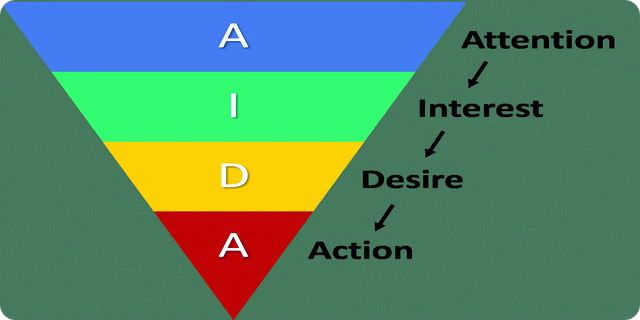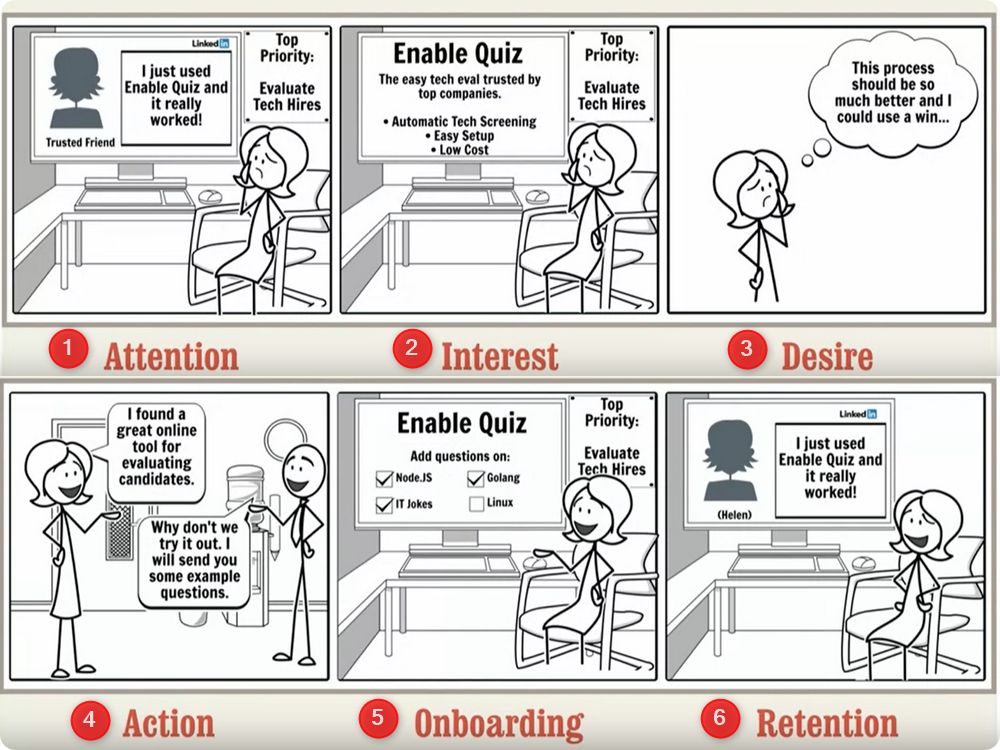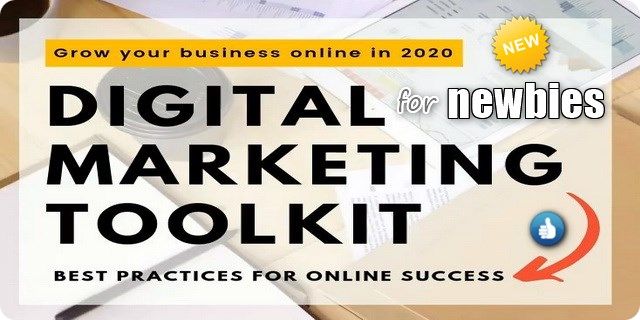Outlining the User Journey in Online Marketing

We’re going to look at AIDA and that stands for ATTENTION, INTEREST, DESIRE, ACTION, and these two steps ONBOARDING and RETENTION.
This is one of the oldest business frameworks still in use today. It’s from the 19th century, from origin marketers and it had these four steps that you see. And then I added onboarding and retention because they were selling soap and snake oil and things and they didn’t have this idea of onboarding people to a platform. So let’s kind of talk about what these mean and how we go from somebody that doesn’t even know that our thing exists. To a happy habitual user of our product or feature or infrastructure.
The idea is that ATTENTION is where we think about how does this user go from not knowing anything about our product or feature to knowing about it. And so we’re asking how does this, how do they even find out that our proposition or product exists. And above all the noise floor, and above all the things that are out there, how do we break through that and get their attention? In a way that’s relevant and helps us transition to the Second Step INTEREST, what engages them with your proposition?
So, for example, we might get somebody’s attention with adverts Google or Facebook ads. And then we might engage in let’s say that’s the first 500 milliseconds to one second of interaction with this person. And we get their interest with a landing page or some kind of focal explanation of what we’re talking about that gets us there their engagement for the next four to six seconds maybe.










